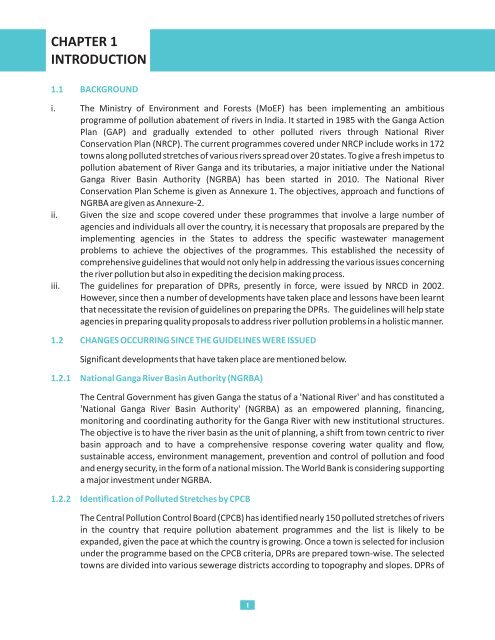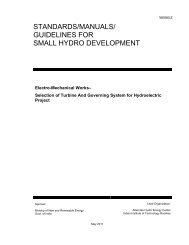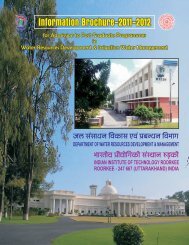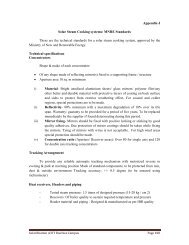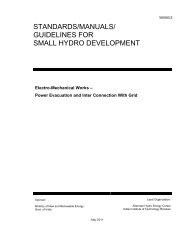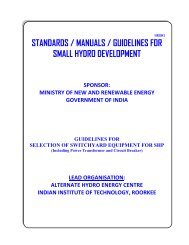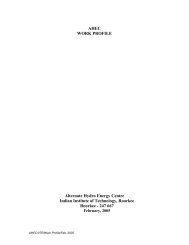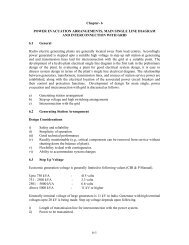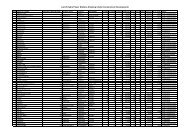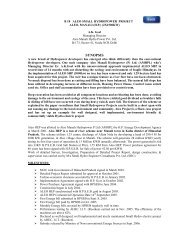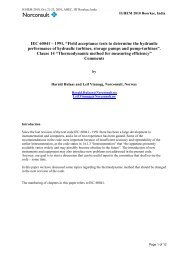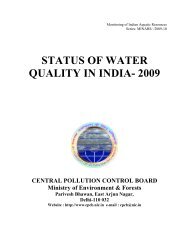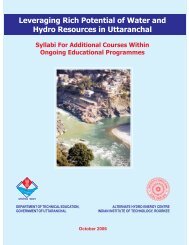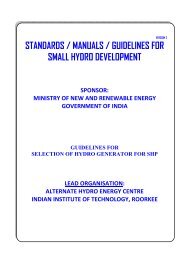annexures - Indian Institute of Technology Roorkee
annexures - Indian Institute of Technology Roorkee
annexures - Indian Institute of Technology Roorkee
You also want an ePaper? Increase the reach of your titles
YUMPU automatically turns print PDFs into web optimized ePapers that Google loves.
CHAPTER 1INTRODUCTION1.1 BACKGROUNDi. The Ministry <strong>of</strong> Environment and Forests (MoEF) has been implementing an ambitiousprogramme <strong>of</strong> pollution abatement <strong>of</strong> rivers in India. It started in 1985 with the Ganga ActionPlan (GAP) and gradually extended to other polluted rivers through National RiverConservation Plan (NRCP). The current programmes covered under NRCP include works in 172towns along polluted stretches <strong>of</strong> various rivers spread over 20 states. To give a fresh impetus topollution abatement <strong>of</strong> River Ganga and its tributaries, a major initiative under the NationalGanga River Basin Authority (NGRBA) has been started in 2010. The National RiverConservation Plan Scheme is given as Annexure 1. The objectives, approach and functions <strong>of</strong>NGRBA are given as Annexure-2.ii.Given the size and scope covered under these programmes that involve a large number <strong>of</strong>agencies and individuals all over the country, it is necessary that proposals are prepared by theimplementing agencies in the States to address the specific wastewater managementproblems to achieve the objectives <strong>of</strong> the programmes. This established the necessity <strong>of</strong>comprehensive guidelines that would not only help in addressing the various issues concerningthe river pollution but also in expediting the decision making process.iii. The guidelines for preparation <strong>of</strong> DPRs, presently in force, were issued by NRCD in 2002.However, since then a number <strong>of</strong> developments have taken place and lessons have been learntthat necessitate the revision <strong>of</strong> guidelines on preparing the DPRs. The guidelines will help stateagencies in preparing quality proposals to address river pollution problems in a holistic manner.1.2 CHANGES OCCURRING SINCE THE GUIDELINES WERE ISSUEDSignificant developments that have taken place are mentioned below.1.2.1 National Ganga River Basin Authority (NGRBA)The Central Government has given Ganga the status <strong>of</strong> a 'National River' and has constituted a'National Ganga River Basin Authority' (NGRBA) as an empowered planning, financing,monitoring and coordinating authority for the Ganga River with new institutional structures.The objective is to have the river basin as the unit <strong>of</strong> planning, a shift from town centric to riverbasin approach and to have a comprehensive response covering water quality and flow,sustainable access, environment management, prevention and control <strong>of</strong> pollution and foodand energy security, in the form <strong>of</strong> a national mission. The World Bank is considering supportinga major investment under NGRBA.1.2.2 Identification <strong>of</strong> Polluted Stretches by CPCBThe Central Pollution Control Board (CPCB) has identified nearly 150 polluted stretches <strong>of</strong> riversin the country that require pollution abatement programmes and the list is likely to beexpanded, given the pace at which the country is growing. Once a town is selected for inclusionunder the programme based on the CPCB criteria, DPRs are prepared town-wise. The selectedtowns are divided into various sewerage districts according to topography and slopes. DPRs <strong>of</strong>1


